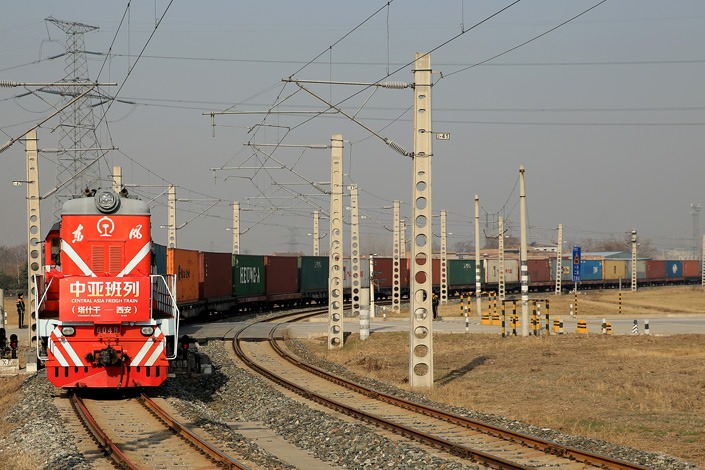With a global vision, China announced the Belt and Road Initiative to the world in 2013. Within the scope of the project, China made investments in many regions from Asia to Europe and from Africa to Latin America. It is known that these investments are within the framework of various fields such as infrastructure, development, energy, mining and production.
The Belt and Road Initiative has been recognized as an important initiative by different countries of the world, as it contributes to the economic and infrastructural development of countries. Especially the center-periphery relations, which emerged as a result of the West-centered capitalist system, have weakened significantly thanks to the Belt and Road Initiative. While this situation led to a decrease in the influence of the West, it brought the development of China and other countries.
The rise of China and the decline of the United States in particular and the Western World in general coincided with similar periods. At this point, instead of looking for the problem in the policies they follow and the system they built, the USA, which blames states such as China and Russia, has turned to containment policies by acting with the logic of the Cold War. In addition, in order to achieve a strong containment, it started to increase its military capacity and encouraged the armament of its various allies. As a result of this, tensions have increased in world politics and a security dilemma has emerged that has evolved from a regional to a global one.
In the said process, the countries involved in the Belt and Road Initiative and the routes through which the project passed were tried to be destabilized by the USA. For example, Japan has been trying to increase its military capacity since 2015. On the other hand, in a wide geography stretching from the Straits of Malacca to the Indian Ocean, various crisis areas have emerged, especially Taiwan and Sri Lanka. These crises also aim to destabilize the Belt and Road Initiative at some point.
As a matter of fact, it is seen that China is heading towards terrestrial corridors. However, the Russia-Ukraine War led to the blockage of the Belt and Road Initiative’s Northern Corridor. Thereupon, the Beijing administration began to give more importance to the Middle Corridor.
Today, there is increasing mutual interest in the Middle Corridor, which is the most stable, safest, shortest and lowest cost route between China and Europe. After the Russia-Ukraine War, the Northern Corridor was used only for trade between the two states; The Middle Corridor has come to the fore as the main line between China and Europe. This is the main reason why Europe has recently shown interest in the South Caucasus, Caspian Sea and Central Asia.
The Middle Corridor has significant potential. Because in 2020, 144 million tons of goods were transported over Russia. In 2023, it is estimated that more than one billion tons of cargo will be transported by the traditional sea route. The destabilization or blockage of these routes directly affects the potential and importance of the Middle Corridor. Today, it is planned to increase the capacity of the Middle Corridor to 10 million tons.
As instability in the world, especially in the seas, increases and the Russia-Ukraine War continues, China and Europe will turn more towards the Middle Corridor. In the said conjuncture, the capacity of the corridor will need to be increased and its potential will be used to its fullest. In this context, countries on the corridor are likely to receive new projects and investments, primarily infrastructure.
Another importance of the Middle Corridor is the guarantee it provides at the point of security. The states of the region are in an important process of convergence and integration with both bilateral relations and ties established through various international organizations. For example, in Central Asia, various problems between states are resolved by peaceful means, joint strategic moves are made and a similar will is displayed to increase the capacity of the Middle Corridor.
In addition, there is no possibility of a conflict that could destabilize the region. In this respect, the security of both the goods transported and the investments made in the Middle Corridor, which is largely closed to foreign interventions, is at a high level. For this reason, both China and Europe show great interest in this line.
As a result, the increasing crisis and tension in the world requires establishing a terrestrial geographical connection between production centers and markets. The region where this has been seen actively in the last few years is Eurasia. The Middle Corridor comes to the fore as a safe line against the crisis environments that the USA is trying to create to prevent China. The orientation of China and Europe to the Middle Corridor further increases the potential of the line. In such an environment, sanctions and projects against the countries on the line will gain importance and intensity. In this way, a multidimensional and comprehensive win-win relationship will be established.

